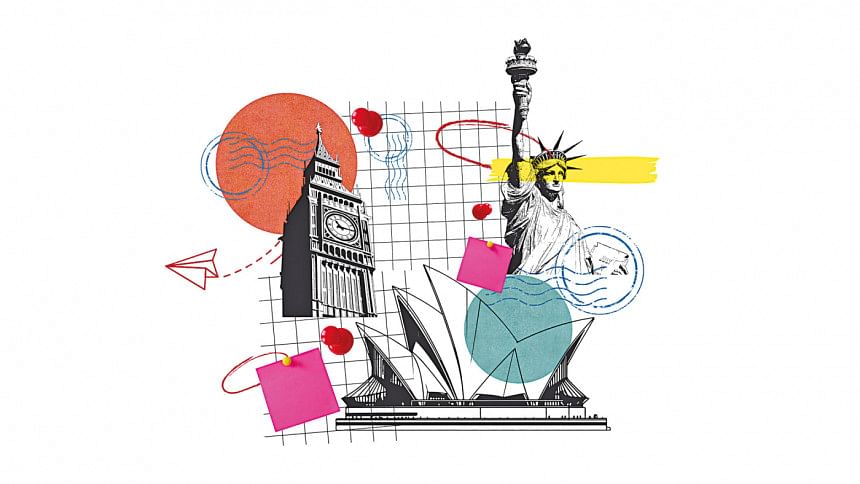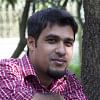Thinking of studying abroad? Here’s how school life varies worldwide

Student life looks very different around the world, with each country offering its own approach to education, exams, and extracurriculars. Whether it's the schooling system or the academic pressures, where you study can shape your future in unique ways.
For students in Bangladesh considering studying abroad, here's a look at how school life, exams, and opportunities compare across different countries.
United States: Flexibility and opportunity
In the United States, education is characterised by flexibility and innovation. High school students often have the freedom to choose elective courses that align with their interests. Advanced Placement (AP) courses and dual enrollment programs allow students to earn college credits early, giving them a head start in higher education.
Standardised tests like the SAT and ACT have traditionally been central to college admissions, though many universities are now adopting more holistic admission processes. Beyond academics, students are encouraged to participate in extracurricular activities such as sports, music, and technology clubs, fostering a well-rounded experience.
Source: National Center for Education Statistics (NCES), College Board
United Kingdom: Tradition meets modernity
The UK has a long-standing reputation for academic excellence. Students usually take their General Certificate of Secondary Education (GCSE) exams at age 16, followed by A levels or other qualifications like the International Baccalaureate (IB) for university preparation. The A level system allows students to specialise in subjects they are passionate about, making it a focused and rigorous educational path.
UK universities emphasise both academic achievement and personal development, with extracurricular activities like sports, music, and theatre playing an important role. The UCAS application system simplifies the university admission process, and many students also benefit from internships and work placements as part of their degrees.
Source: UCAS, British Council
Australia: A balanced approach
Australia offers a well-rounded education system that balances academic rigour with a strong emphasis on extracurriculars and real-world experience. Students take the Higher School Certificate (HSC) or its equivalent, such as the Victorian Certificate of Education (VCE), which prepares them for university.
Exams are important, but there's also a focus on personal development through sports, arts, and outdoor activities. Australia's education system encourages critical thinking, teamwork, and practical skills, with many students opting for vocational education and training (VET) courses alongside traditional academic subjects.
Source: Australian Government Department of Education, Australian Curriculum, Assessment and Reporting Authority (ACARA)
Japan: Rigorous discipline and strong community
Japan's education system is renowned for its discipline and structure. Students adhere to a strict schedule, with respect for authority and rules being a core value in schools. The competitive nyūgaku shiken entrance exams for high school and university drive many students to attend after-school juku (cram schools) to stay ahead.
Extracurricular activities, known as bukatsu, are deeply ingrained in school life, whether in sports, arts, or academic clubs. These activities help students develop teamwork and leadership skills, balancing Japan's academic intensity with a sense of community and collaboration.
Source: Ministry of Education, Culture, Sports, Science and Technology (MEXT)
Finland: Focus on well-being and practical learning
In Finland, the emphasis is on student well-being and practical learning rather than rote memorisation. Finnish students enjoy a relaxed school environment with minimal standardised testing. Instead, project-based learning encourages creativity and problem-solving from an early age.
The only major exam, the matriculation examination, comes at the end of upper secondary education and determines university eligibility. Finland is also known for encouraging outdoor activities, arts, and self-directed learning, helping students grow holistically.
Source: Finnish national agency for education
India: A competitive academic landscape
India's education system places immense pressure on students, particularly during key exams like the Board Exams for classes 10 and 12. Competitive entrance exams, such as the Joint Entrance Examination (JEE) for engineering and the National Eligibility cum Entrance Test (NEET) for medical studies, are crucial for university admissions.
Despite the academic intensity, India's students increasingly engage in extracurricular activities like debates, Model United Nations, and science Olympiads. There's also a growing push towards integrating arts and creativity into the traditionally STEM-focused curriculum.
Source: National Council of Educational Research and Training (NCERT)
Germany: Academic excellence meets practical skills
Germany is known for its unique dual education system, where students split their time between classroom learning and apprenticeships. This system allows students to gain practical, hands-on experience while still earning academic qualifications.
After secondary education, students take the Abitur, which serves as a gateway to university education. Alternatively, many students pursue vocational training, blending academic knowledge with real-world skills and job placements.
Source: Federal Ministry of Education and Research (BMBF)
Bangladesh: A blend of tradition and international curricula
In Bangladesh, students have access to both traditional and international education systems. Local students typically follow the Secondary School Certificate (SSC) and Higher Secondary Certificate (HSC) pathways, while a growing number opt for O and A levels through Pearson Edexcel and Cambridge Assessment International Education (CAIE).
The SSC and HSC exams, as well as university entrance exams, are critical for students hoping to attend universities in Bangladesh. For Bangladeshi students wanting to go abroad for higher studies, results from O and A levels are widely accepted. Extracurricular activities are gaining prominence, with students participating in national debates, science fairs, and even coding competitions. Digital learning platforms are also expanding opportunities for academic growth.
Source: Ministry of Education, Bangladesh; British Council Bangladesh
SOUTH KOREA: Intense focus on academic success
South Korea's education system is highly competitive, with immense pressure placed on students to succeed in exams. The Suneung (College Scholastic Ability Test) is one of the most critical and one of the hardest exams in a student's life, shaping their future university prospects.
Private academies, known as hagwons, are a cornerstone of South Korean education, where students often spend long hours preparing for exams. Despite the academic pressure, students also participate in school clubs and extracurricular activities to build social skills and foster personal growth.
Source: Ministry of Education, South Korea

 For all latest news, follow The Daily Star's Google News channel.
For all latest news, follow The Daily Star's Google News channel. 



Comments